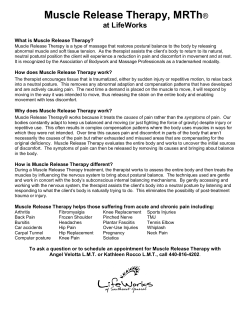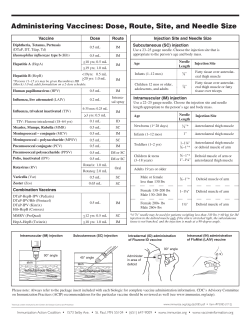
What is Hypotonia? PARENT GUIDE AND FREQUENTLY ASKED QUESTIONS
What is Hypotonia? PARENT GUIDE AND FREQUENTLY ASKED QUESTIONS Hypotonia, also known as low tone, is the most common motor abnormality in young children. Low muscle tone is often associated with floppiness, limpness or a feeling of heaviness when a limb is moved by another person. It may appear that the child’s muscles do not have enough stiffness to stabilize or move the limbs adequately. Low tone does not support a joint well, so the joints are loose and sometimes inappropriately described as ‘double jointed’. Most low tone infants show delayed developmental milestones. Hypotonic infants are late learning to lift their heads during tummy time, roll over, lift themselves into sitting, balance in sitting without falling over, crawl and walk. What does muscle tone mean? The term ‘muscle tone’ refers to how tense a muscle is at rest. This tension helps prepare the muscle for movement and also helps to support the muscles and joints as they move. Abnormal or atypical tone presents as more or less tension than normal. Muscle tone is monitored and controlled by the brain. The brain uses information it is constantly receiving from the muscles, other parts of the body and from the environment to automatically adjust tone. Therapeutic handling activities and exercises use all of these factors to influence tone. How will low muscle tone affect my child’s development? Before a child can reach, crawl or walk, he needs to have good control of the head and trunk. This provides a stable base from which the arms and legs can work. Very often a child with low muscle tone is slower to develop this central control, making it difficult to use his arms and hands in a well controlled manner. Physical and occupational therapy will often focus on developing this core control with strong neck and trunk muscles that are needed to make progress with motor development. What is the difference between tone and strength? Tone is the resting state of the muscle and is assessed when the muscle is relaxed. Strength is the measure of how many fibers within the muscle are working. As strength increases more fibers are called upon to work or contract. This is affected by how much effort the child puts into the movement. If I provide my child with strengthening activities, will that improve muscle tone? Strengthening activities help make the joints more stable by strengthening the muscles that surround and support the joint. While strengthening exercises may not change the underlying tone, they do compensate for and decrease the effects of low muscle tone. Rehabilitation / Physical Therapy Department 02255-034 (8-10) I am very frustrated by the slow progress my child is making. What causes this? Children with low tone often need a longer period of time to practice in a new position before learning to move within or transfer to and from the position. This may make it seem that your child’s developmental progress as stopped. Subtle changes are occurring as your child practices sitting, hands and knees and standing. Persistence with therapeutic activities and patience will soon bring the next surge of progress. I have been told to avoid letting my child W-sit. Why should this position be avoided? W-sitting is the first sitting position most children with low tone learn. This position is very easy to assume as no rotation of the trunk is required. The child simply shifts backward from hands and knees into sitting between the feet. The position is very stable and the child cannot fall over because of the wide base of support. Once children with low tone discover this position, they are hesitant to use more developmentally mature positions such as circle, long or side sitting, which require more trunk control, balance and rotational movement patterns. The W-sitting position is unfavorable as it can contribute to contractures of the hamstrings, hip flexors, adductors and heel cords. What types of therapeutic activities can I use to help my child? There are several therapeutic activities commonly used to increase low muscle tone. The effects of these techniques are temporary and are used in therapy to help children learn to activate their muscles and stabilize their joints, giving them the stability they need to control their own movement. Activities that involve bouncing, joint compression, heavy touch and tapping the muscle are all effective techniques to increase tone. As strength and control improve, these techniques may no longer be needed. Your physical or occupational therapist will guide you in learning to use these activities at home. This information is not intended to diagnose health problems or to take the place of medical advice or care you receive from your physician or other health care professional. If you have persistent health problems, or if you have additional questions, please consult your doctor. (c) January 2010. All rights reserved. Rehabilitation / Physical Therapy Department 02255-034 (8-10) REVERSE
© Copyright 2025





















